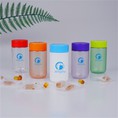HDPE (High-Density Polyethylene) is one of the most widely used plastics in the world, particularly in food packaging, pharmaceutical bottles, and containers for health supplements. But a common question from safety-conscious consumers is: Does HDPE contain lead?
Why Is HDPE Considered Safe?
Chemical Stability: HDPE is highly resistant to chemicals and does not leach harmful substances under normal use.
No Heavy Metals: Reputable manufacturers use virgin food-grade HDPE without additives like lead, cadmium, or mercury.
Regulatory Approval: Certified HDPE products are tested under strict safety guidelines, including migration tests to ensure no harmful elements are released.
When to Be Cautious
While HDPE itself doesn't contain lead, improper manufacturing or recycled HDPE from unknown sources may pose risks. Some lower-quality plastic products - especially those not intended for food use - might contain contaminants or color additives with heavy metals.
If safety is a priority, always choose HDPE containers from certified suppliers who follow GMP and food-contact regulations.





